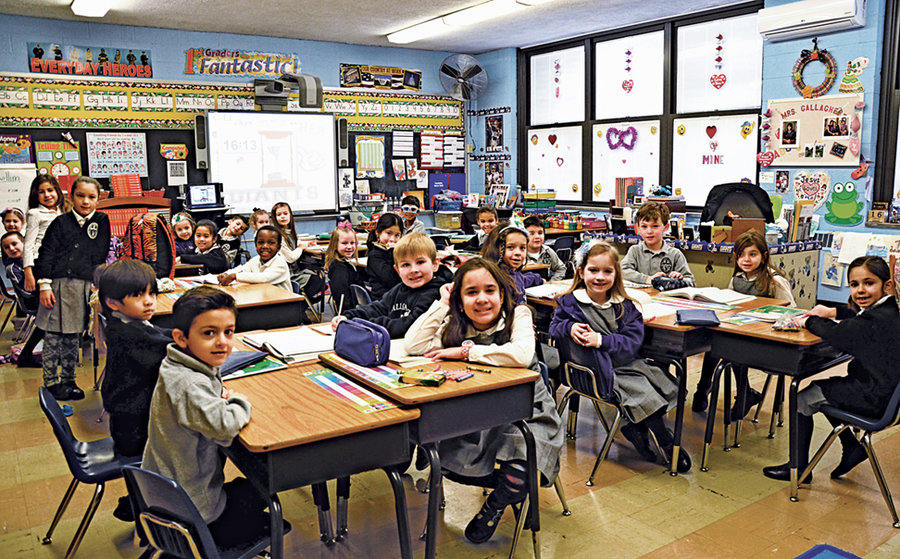The Catholic Church has had a long history of service to the Bayonne community, which boasts a robust Catholic flock. It can trace its Roman fervor to the legions of immigrants from Ireland, Italy, Poland, Latin America, and other bastions of Catholicism, or you can look to recent local history to grasp the depth of Catholic devotion.
Facing rising costs and unmanageable debt, the city’s seven Roman Catholic churches are considering a measure that many parishioners find unsettling: merging or “linking” with other parishes. St. Andrew the Apostle has already linked with St. Mary, Star of the Sea.
The Newark Archdiocese says it wants the parishioners themselves to decide whether mergers would solve the churches’ money problems. Rev. Peter Wehrle, parish administrator of St. Andrew the Apostle, told the Bayonne Community News, “What’s been hard is the people who are saying, ‘Will you have to close my parish?’ People in Bayonne have a strong emotional tie to their church.”
These folks should look to the parents, students, and administrators of All Saints Catholic Academy, the grammar school which was formed in 2008 from the merger of four separate Catholic schools: St. Mary’s, St. Henry’s, Assumption, and St. Vincent’s, all connected to their respective parishes. The school is currently housed in St. Mary’s parish.
“Each of the schools was suffering a decline in enrollment,” says Joe Moran, former principal of All Saints. “That’s a theme among Catholic elementary schools in cities. Rather than keep five or six schools with a hundred students, it’s a better option to consolidate into one.”
The school, which also takes students from Jersey City, Staten Island, and Elizabeth, goes from pre-k to eighth grade, and enrolls about 500 students. “Anyone can come from anywhere,” Moran says.
The students go on to Catholic high schools, such as Marist in Bayonne, St. Dominic’s and St. Peter’s in Jersey City, Notre Dame in Manhattan, or one in Staten Island. “A good percentage also go to Bayonne High School,” Moran says.
Before the consolidation, Moran says, “There was some concern about how well the different communities would mesh and not think of themselves as St. Mary’s or St. Henry’s. That’s gone away now. Kids who have been here for seven years think of it as one school. It’s done well. It’s a good model for other communities.”
Why a Catholic Education?
Jim Goodness, vice chancellor and director of communications of the Archdiocese, says, “The main difference between Catholic and secular schools is that Catholic schools discuss values and principles of right and wrong openly and reinforce them in all classes throughout the day. In public school you have to be careful about pushing one agenda over another. Catholic schools reference the faith and shared values that represent Catholicism.”
“Religion classes don’t require students to convert,” Moran says, “and there have been no problems with any of the parents. We teach things that all religions emphasize: treating people with respect, doing the right thing, not stealing, and not harming others. Everybody can agree on those.”
Non-Catholic students include Jews, Egyptian Coptic Christians, Baptists, Lutherans, and other Protestants, as well as people who identify as agnostics or have no religion. “You don’t have to pass a litmus test to come in,” Moran says. “Families are drawn to the sense of community, parental involvement, and lack of disciplinary problems at All Saints.”
Times Change
The student body celebrates Mass and religious holidays, including Easter and Ash Wednesday, and a priest comes in once a week to teach a class. “There is a very visible presence of religion,” Goodness says, “It’s not like it was when many of us of a certain generation attended Catholic school, when Religious Sisters and Brothers were more the norm. Today, most teachers in Catholic schools are laymen and women. Our faculties are professional educators, trained and certified not only in academics, but also trained in teaching the faith. The people may have changed, but the basics of Catholic education haven’t changed.”
The consolidation seems to have been a financial success. “We’re self sustaining,” Moran says. “We don’t get any money from the Archdiocese, though if we ran into problems, we would. Since the school started it’s been in the black. We’re in good financial shape due to careful budgeting, strong enrollment, a careful, active home/school association, and donations from fundraising, which we expect will continue.”
The Archdiocese says it’s important that the public knows that the school is going strong. “Some may have thought that all Catholic schools went away,” Goodness says. “That’s simply not true. We’re here for the long term. In fact, our school is running out of space and looking to grow.”
Moran says of his time at All Saints, “I like being with kids. It’s why I went into this business. I love their energy and their approach to life. It’s a cliché, but it keeps me focused and young and gives me a reason to get up and go to work every day.”—Kate Rounds
